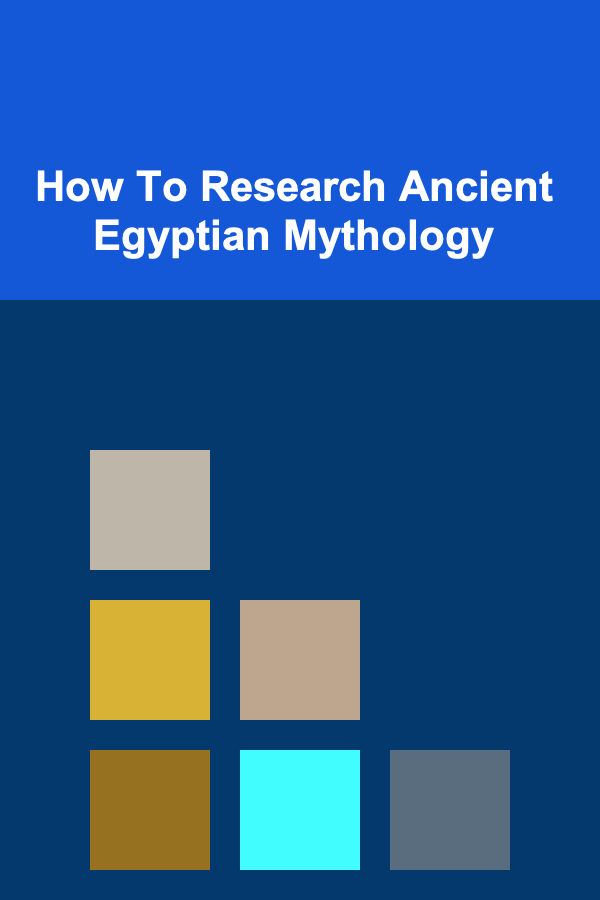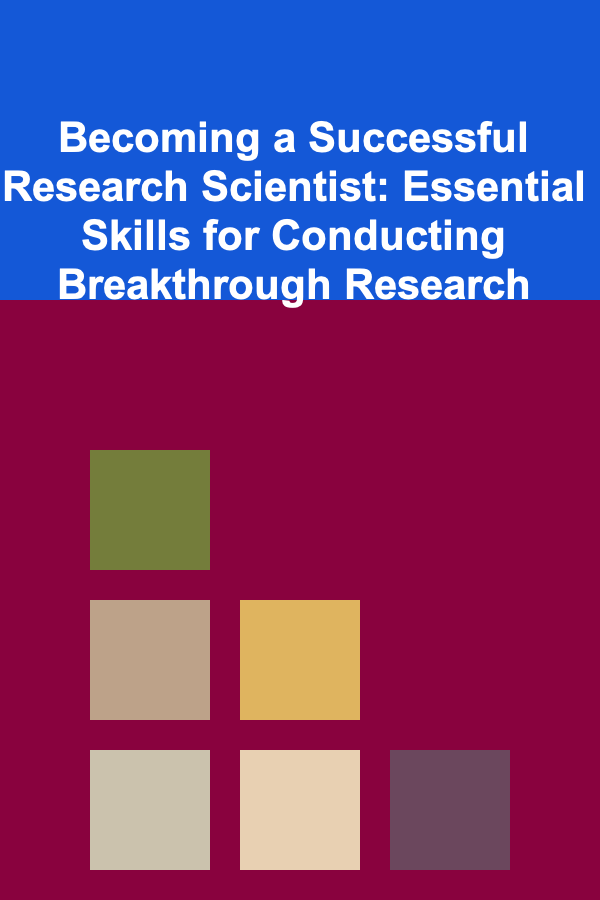
How To Research Ancient Egyptian Mythology
ebook include PDF & Audio bundle (Micro Guide)
$12.99$7.99
Limited Time Offer! Order within the next:

Ancient Egyptian mythology is one of the oldest and most fascinating belief systems in human history. Spanning over thousands of years, Egyptian mythology shaped the culture, religion, and identity of one of the most powerful civilizations of the ancient world. Understanding this mythology provides insight not only into the beliefs of the Egyptians but also into the practical ways they lived their daily lives, governed their society, and interacted with the world around them. However, researching ancient Egyptian mythology is no simple task due to the complexities of language, historical evolution, and the loss of records over time. This article will explore the best methods for researching ancient Egyptian mythology, the tools available, and the key themes you should focus on.
The Importance of Context in Ancient Egyptian Mythology
Before diving into the research itself, it's important to understand the significance of Egyptian mythology. Egyptian mythology wasn't just a set of stories or folklore; it was a system that shaped the entire worldview of the ancient Egyptians. These myths explained the forces of nature, the origins of life, death, and the afterlife, the relationship between humans and the gods, and the principles of cosmic order.
Ancient Egypt was a deeply religious society, and the gods were believed to govern all aspects of existence. Pharaohs were considered divine and were often the central figure in the myths. Understanding the interconnectedness of the gods, as well as their relationships to one another and to humans, is crucial to properly researching and interpreting Egyptian mythology.
Primary Sources for Researching Ancient Egyptian Mythology
When embarking on research into Egyptian mythology, you will primarily rely on various sources, both ancient and modern, to piece together a comprehensive understanding. There are several primary sources that scholars and enthusiasts turn to:
1. The Pyramid Texts
The Pyramid Texts are among the oldest religious texts from ancient Egypt, dating back to around 2400 BCE. These texts were inscribed on the walls of pyramids and were primarily intended to ensure the safe passage of the pharaohs into the afterlife. The texts contain numerous references to gods, creation myths, and rituals surrounding death and the afterlife. The Pyramid Texts are rich with mythological content and offer one of the most direct windows into early Egyptian religious thought.
2. The Coffin Texts
The Coffin Texts emerged after the Pyramid Texts and were written on the inside of coffins during the Middle Kingdom (c. 2050--1710 BCE). These texts were intended for private individuals, not just royalty, and thus provide insights into a broader spectrum of Egyptian society. Much like the Pyramid Texts, the Coffin Texts deal with themes of the afterlife, divine intervention, and cosmic order.
3. The Book of the Dead
The Book of the Dead is one of the most famous texts associated with ancient Egyptian religion. It is a compilation of spells, prayers, and instructions designed to assist the deceased in navigating the challenges of the afterlife. These texts were often written on papyrus and placed in tombs. They reflect a more developed concept of the afterlife than earlier texts and offer detailed accounts of the journey the deceased must undertake to achieve immortality.
4. The Mythological Texts
Several texts directly address Egyptian mythology. Among the most important are the Coffin Texts and the Hyksos Texts (relating to foreign rule in Egypt), which contain direct mythological accounts of gods like Osiris, Isis, Horus, and Ra. The Hymns to the Gods and The Memphite Theology are other crucial texts that describe creation myths and the relationship between gods like Ptah, Ra, and Atum.
5. Temple Inscriptions and Monuments
Temples throughout Egypt often contained inscriptions and monumental carvings that depicted various gods and mythological scenes. The Temple of Karnak and the Temple of Luxor are rich with depictions of mythological events and gods in visual form. These inscriptions provide a concrete representation of mythological stories and show how these myths were integrated into the religious and social structure of Egypt.
Secondary Sources and Modern Research on Egyptian Mythology
While primary texts provide direct insights, secondary sources are often essential for a deeper understanding of Egyptian mythology. Scholars have translated and interpreted many of the ancient texts, shedding light on their meanings and historical contexts. Secondary sources include:
1. Scholarly Books and Journals
Several scholars have written extensively on ancient Egyptian mythology, providing comprehensive studies on the subject. Books such as "The Complete Gods and Goddesses of Ancient Egypt" by Richard H. Wilkinson and "The Oxford History of Ancient Egypt" offer a broad overview of Egyptian religious beliefs, gods, and myths. Journals like the Journal of Egyptian Archaeology regularly publish articles on new discoveries and interpretations of ancient texts.
2. Online Databases and Resources
The digital age has made it easier than ever to access a wealth of information on Egyptian mythology. Websites like The British Museum , The Metropolitan Museum of Art , and The Egyptian Museum in Cairo have extensive collections of Egyptian artifacts, many of which contain mythological references. These online resources often provide high-resolution images of artifacts and translations of key texts.
3. Documentaries and Lectures
Documentaries and lectures from renowned Egyptologists can provide an accessible way to learn about Egyptian mythology. The BBC , National Geographic , and The History Channel have all produced series on ancient Egypt that delve into mythology. Additionally, many universities and academic institutions offer free online lectures, such as those on platforms like Coursera or YouTube.
Key Themes and Deities in Ancient Egyptian Mythology
Egyptian mythology is rich with gods, creation stories, and cosmic principles. Understanding the following key themes and deities will deepen your research:
1. Creation Myths
The Egyptians had several different creation myths, each centered around different gods and regions of Egypt. In one version, Ra , the sun god, is said to have created the world from the primordial waters of chaos (Nu). Another version from Heliopolis involved Atum, who created the first gods through an act of masturbation or spitting. These myths explore how the Egyptians understood the origin of the world and the role of the gods in shaping it.
2. Osiris and the Afterlife
The myth of Osiris is perhaps the most famous and most important myth in Egyptian religion. Osiris, the god of death and resurrection, was killed by his brother Set , who scattered his body. His wife, Isis , then collected the pieces of Osiris's body and resurrected him, allowing him to rule the afterlife. The myth symbolizes the cyclical nature of life and death and the hope for immortality. The myth of Osiris was also tied to the Weighing of the Heart ritual, in which the heart of the deceased was weighed against the feather of Ma'at, the goddess of truth and order.
3. Ra and the Sun
Ra, the sun god, was one of the most important gods in Egyptian mythology. He was associated with creation, life, and the journey of the sun through the sky. The myth of Ra's daily journey through the sky (from east to west) and his nightly journey through the underworld was central to Egyptian beliefs. Ra's battle with the serpent Apep, who represented chaos, was a constant theme in Egyptian religion and mythology.
4. Horus and the Kingship
The myth of Horus and his battle with his uncle Set symbolizes the divine right of kingship in ancient Egypt. Horus, the falcon-headed god, was the son of Osiris and Isis and was considered the protector of Egypt and its rulers. The pharaohs were believed to be the earthly incarnation of Horus, and their legitimacy rested on their connection to the god.
How to Analyze and Interpret Ancient Egyptian Myths
When researching ancient Egyptian mythology, it's essential to approach the material critically and interpret the myths within their cultural and historical context. Here are some strategies to help you interpret the myths:
1. Understand the Symbolism
Egyptian myths are rich with symbolism, and many of the gods and goddesses represent abstract concepts like order, chaos, life, death, and rebirth. For example, Ra is not just the sun god but represents the idea of light, creation, and order. Apep, as the serpent, symbolizes chaos and destruction. Understanding these symbols will help you decipher the deeper meanings of the myths.
2. Examine Regional Variations
Egypt was a vast and diverse civilization, and different regions often had their own versions of myths. For example, the creation myths of Heliopolis, Thebes, and Memphis varied considerably. Understanding these regional differences will give you a more nuanced understanding of Egyptian mythology.
3. Consider the Historical Context
The myths of ancient Egypt did not exist in a vacuum; they evolved over time, reflecting the political, social, and economic changes in Egyptian society. For example, the prominence of Osiris as a death god likely rose during a time when Egyptians were particularly concerned with the afterlife and immortality. Examining the historical context of the myths helps you understand why certain gods or myths became more prominent at particular points in time.
4. Look for Cross-Cultural Connections
Egyptian mythology is not isolated; it shares many similarities with other ancient mythologies, particularly those of the Near East. Comparing Egyptian myths with those from Mesopotamia, Greece, and other cultures can provide insights into common themes and shared human experiences.
Conclusion
Researching ancient Egyptian mythology is a rewarding but complex task that requires an understanding of both primary texts and secondary sources. By utilizing ancient texts, scholarly works, online resources, and modern interpretations, you can build a comprehensive understanding of this ancient belief system. Key themes like creation myths, the afterlife, and the roles of gods like Osiris, Ra, and Horus will guide your exploration. With a critical approach to interpretation, you can uncover the deep symbolism and cultural significance of Egyptian mythology, shedding light on the fascinating world of the ancient Egyptians.

Becoming a Successful Research Scientist: Essential Skills for Conducting Breakthrough Research
Read More
Best Affordable Fitness Options for Busy People: An Actionable Guide
Read More
How to Organize Supplies and Tools in Your Garage Inventory
Read More
How to Stage Your Home on a Tight Timeline
Read More
How to Store and Display Your Hobby Collections in a Neat and Tidy Way
Read More
How to Successfully Negotiate Lowering Auto Loan Interest Rates
Read MoreOther Products

Becoming a Successful Research Scientist: Essential Skills for Conducting Breakthrough Research
Read More
Best Affordable Fitness Options for Busy People: An Actionable Guide
Read More
How to Organize Supplies and Tools in Your Garage Inventory
Read More
How to Stage Your Home on a Tight Timeline
Read More
How to Store and Display Your Hobby Collections in a Neat and Tidy Way
Read More